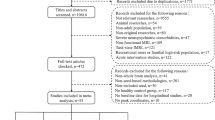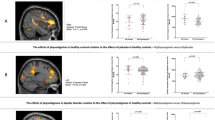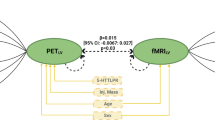Abstract
The glucocorticoid hormone cortisol is known to have wide-ranging effects on a variety of physiological systems, including the morphology and physiology of the amygdala and hippocampus. Disruptions of cortisol regulation and signaling are also linked with psychiatric disorders involving emotional disturbances. Although there is much evidence to suggest a relationship between cortisol signaling and the brain physiology underlying emotion, few studies have attempted to test for direct effects of cortisol on the neurophysiology of emotion. We administered exogenous synthetic cortisol (hydrocortisone, HCT) using two different dosing regimens (25 mg/day over 4 days, 100 mg single dose), in a double-blind placebo-controlled functional magnetic resonance imaging (fMRI) study. During fMRI scanning, healthy subjects viewed images designed to induce happy, sad, and neutral emotional states. Subjective emotional reactions were collected for each experimental stimulus after fMRI scanning. Mood ratings were also collected throughout the 4 days of the study. Both dose regimens of HCT resulted in decreased subgenual cingulate activation during sadness conditions. The 25 mg/day regimen also resulted in higher arousal ratings of sad stimuli. No effects of HCT were observed on any mood ratings. Few reliable effects of HCT were observed on brain activity patterns or subjective emotional responses to stimuli that were not sad. The inhibitory effects of cortisol on sadness-induced subgenual cingulate activity may have critical relevance to the pathophysiology of major depression, as both subgenual hyperactivity and decreased sensitivity to cortisol signaling have been documented in patients with depression.
Similar content being viewed by others
Log in or create a free account to read this content
Gain free access to this article, as well as selected content from this journal and more on nature.com
or
References
Abercrombie HC, Jahn AL, Davidson RJ, Kern S, Kirschbaum C, Halverson J (2011). Cortisol’s effects on hippocampal activation in depressed patients are related to alterations in memory formation. J Psychiatr Res 45: 15–23.
Britton JC, Taylor SF, Sudheimer KD, Liberzon I (2005). Facial expressions and complex IAPS pictures: common and differential networks. Neuroimage 31: 906–919.
Brown ES, Woolston DJ, Frol A, Bobadilla L, Khan DA, Hanczyc M et al (2004). Hippocampal volume, spectroscopy, cognition, and mood in patients receiving corticosteroid therapy. Biol Psychiatry 55: 538–545.
Brown ES, Woolston DJ, Frol AB (2008). Amygdala volume in patients receiving chronic corticosteroid therapy. Biol Psychiatry 63: 705–709.
Buchanan TW, Lovallo WR (2001). Enhanced memory for emotional material following stress-level cortisol treatment in humans. Psychoneuroendocrinology 26: 307–317.
Cho K, Little HJ (1999). Effects of corticosterone on excitatory amino acid responses in dopamine-sensitive neurons in the ventral tegmental area. Neuroscience 88: 837–845.
Damasio H (2005) Human Brain Anatomy in Computerized Images 2nd edn. Oxford University Press: New York, NY. xv p 540.
De Kloet ER, Vreugdenhil E, Oitzl MS, Joels M (1998). Brain corticosteroid receptor balance in health and disease. Endocr Rev 19: 269–301.
De Quervain DJ, Henke K, Aerni A, Treyer V, McGaugh JL, Berthold T et al (2003). Glucocorticoid-induced impairment of declarative memory retrieval is associated with reduced blood flow in the medial temporal lobe. Eur J Neurosci 17: 1296–1302.
Greden JF, Albala AA, Haskett RF, James NM, Goodman L, Steiner M et al (1980). Normalization of dexamethasone suppression test: a laboratory index of recovery from endogenous depression. Biol Psychiatry 15: 449–458.
Gur RC, Schroeder L, Turner T, McGrath C, Chan RM, Turetsky BI et al (2002). Brain activation during facial emotion processing. Neuroimage 16 (3 Part 1): 651–662.
Henckens MJ, van Wingen GA, Joels M, Fernandez G (2010). Time-dependent effects of corticosteroids on human amygdala processing. J Neurosci 30: 12725–12732.
Holsboer F (2000). The corticosteroid receptor hypothesis of depression. Neuropsychopharmacology 23: 477–501.
Karst H, Nair S, Velzing E, Rumpff-van Essen L, Slagter E, Shinnick-Gallagher P et al (2002). Glucocorticoids alter calcium conductances and calcium channel subunit expression in basolateral amygdala neurons. Eur J Neurosci 16: 1083–1089.
Lang PJ, Bradley MM, Cuthbert BN (1999). . International Affective Picture System (IAPS): Instruction Manual and Affective Ratings.
Ling MH, Perry PJ, Tsuang MT (1981). Side effects of corticosteroid therapy. Psychiatric aspects. Arch Gen Psychiatry 38: 471–477.
Lovallo WR, Robinson JL, Glahn DC, Fox PT (2010). Acute effects of hydrocortisone on the human brain: an fMRI study. Psychoneuroendocrinology 35: 15–20.
Mai JK, Assheuer J, Paxinos G (2004) Atlas of the Human Brain 2nd edn. Elsevier Academic Press: Amsterdam, Boston. viii, pp 246.
Mayberg HS, Brannan SK, Mahurin RK, Jerabek PA, Brickman JS, Tekell JL et al (1997). Cingulate function in depression: a potential predictor of treatment response. Neuroreport 8: 1057–1061.
Mayberg HS, Liotti M, Brannan SK, McGinnis S, Mahurin RK, Jerabek PA et al (1999). Reciprocal limbic-cortical function and negative mood: converging PET findings in depression and normal sadness. Am J Psychiatry 156: 675–682.
Mitra R, Sapolsky RM (2008). Acute corticosterone treatment is sufficient to induce anxiety and amygdaloid dendritic hypertrophy. Proc Natl Acad Sci USA 105: 5573–5578.
Orchinik M, Murray TF, Moore FL (1991). A corticosteroid receptor in neuronal membranes. Science 252: 1848–1851.
Pariante CM (2006). The glucocorticoid receptor: part of the solution or part of the problem? J Psychopharmacol 20 (4 Suppl): 79–84.
Pariante CM, Thomas SA, Lovestone S, Makoff A, Kerwin RW (2004). Do antidepressants regulate how cortisol affects the brain? Psychoneuroendocrinology 29: 423–447.
Reuter M (2002). Impact of cortisol on emotions under stress and nonstress conditions: a pharmacopsychological approach. Neuropsychobiology 46: 41–48.
Rose JD (2000). Corticosteroid actions from neuronal membrane to behavior: neurophysiological mechanisms underlying rapid behavioral effects of corticosterone. Biochem Cell Biol 78: 307–315.
Sapolsky RM (2000). Glucocorticoids and hippocampal atrophy in neuropsychiatric disorders. Arch Gen Psychiatry 57: 925–935.
Sarrieau A, Dussaillant M, Agid F, Philibert D, Agid Y, Rostene W (1986). Autoradiographic localization of glucocorticosteroid and progesterone binding sites in the human post-mortem brain. J Steroid Biochem 25: 717–721.
Sheehan DV, Janavs J, Baker R, Harnett-Sheehan K, Knapp E, Sheehan M et al (1998). MINI - Mini International Neuropsychiatric Interview - English Version 5.0.0 - DSM-IV. J Clin Psychiatry 59: 34–57.
Stetler C, Miller GE (2011). Depression and hypothalamic-pituitary-adrenal activation: a quantitative summary of four decades of research. Psychosom Med 73: 114–126.
Sudheimer K, Winn B, Kerndt G, Shoaps J, Davis K, Fobbs A et al (2002). www.msu.edu/~brains/brains/human/.
Tzourio-Mazoyer N, Landeau B, Papathanassiou D, Crivello F, Etard O, Delcroix N et al (2002). Automated anatomical labeling of activations in SPM using a macroscopic anatomical parcellation of the MNI MRI single-subject brain. Neuroimage 15: 273–289.
Wada K, Yamada N, Sato T, Suzuki H, Miki M, Lee Y et al (2001). Corticosteroid-induced psychotic and mood disorders: diagnosis defined by DSM-IV and clinical pictures. Psychosomatics 42: 461–466.
Wada K, Yamada N, Suzuki H, Lee Y, Kuroda S (2000). Recurrent cases of corticosteroid-induced mood disorder: clinical characteristics and treatment. J Clin Psychiatry 61: 261–267.
Watson D, Clark LA (1994). http://www.psychology.uiowa.edu/faculty/watson/PANAS-X.pdf.
Watson D, Clark LA, Tellegen A (1988). Development and Validation of Brief Measures of Positive and Negative Affect - the Panas Scales. J Pers Soc Psychol 54: 1063–1070.
Watzka M, Beyenburg S, Blumcke I, Elger CE, Bidlingmaier F, Stoffel-Wagner B (2000a). Expression of mineralocorticoid and glucocorticoid receptor mRNA in the human hippocampus. Neurosci Lett 290: 121–124.
Watzka M, Bidlingmaier F, Beyenburg S, Henke RT, Clusmann H, Elger CE et al (2000b). Corticosteroid receptor mRNA expression in the brains of patients with epilepsy. Steroids 65: 895–901.
Webster MJ, Knable MB, O’Grady J, Orthmann J, Weickert CS (2002). Regional specificity of brain glucocorticoid receptor mRNA alterations in subjects with schizophrenia and mood disorders. Mol Psychiatry 7: 985–994 924.
Wellman CL (2001). Dendritic reorganization in pyramidal neurons in medial prefrontal cortex after chronic corticosterone administration. J Neurobiol 49: 245–253.
Wirth MM, Scherer SM, Hoks RM, Abercrombie HC (2011). The effect of cortisol on emotional responses depends on order of cortisol and placebo administration in a within-subject design. Psychoneuroendocrinology.
Woolley CS, Gould E, McEwen BS (1990). Exposure to excess glucocorticoids alters dendritic morphology of adult hippocampal pyramidal neurons. Brain Res 531: 225–231.
Yang Y, Gu H, Zhan W, Xu S, Silbersweig DA, Stern E (2002). Simultaneous perfusion and BOLD imaging using reverse spiral scanning at 3T: characterization of functional contrast and susceptibility artifacts. Magn Reson Med 48: 278–289.
Zobel AW, Nickel T, Sonntag A, Uhr M, Holsboer F, Ising M (2001). Cortisol response in the combined dexamethasone/CRH test as predictor of relapse in patients with remitted depression. a prospective study. J Psychiatr Res 35: 83–94.
Zobel AW, Yassouridis A, Frieboes RM, Holsboer F (1999). Prediction of medium-term outcome by cortisol response to the combined dexamethasone-CRH test in patients with remitted depression. Am J Psychiatry 156: 949–951.
Acknowledgements
This work was funded by the National Institutes of Health F31MH073223, R24MH075999, and the University of Michigan Depression Center Rachel Upjohn clinical scholar award.
Author information
Authors and Affiliations
Corresponding author
Ethics declarations
Competing interests
Dr Taylor has received research support from St Jude Medical and Neuronetics. All the other authors declare no conflict of interest.
Rights and permissions
About this article
Cite this article
Sudheimer, K., Abelson, J., Taylor, S. et al. Exogenous Glucocorticoids Decrease Subgenual Cingulate Activity Evoked by Sadness. Neuropsychopharmacol 38, 826–845 (2013). https://doi.org/10.1038/npp.2012.249
Received:
Revised:
Accepted:
Published:
Issue date:
DOI: https://doi.org/10.1038/npp.2012.249
Keywords
This article is cited by
-
Decreased Hypothalamic Functional Connectivity with Subgenual Cortex in Psychotic Major Depression
Neuropsychopharmacology (2015)



